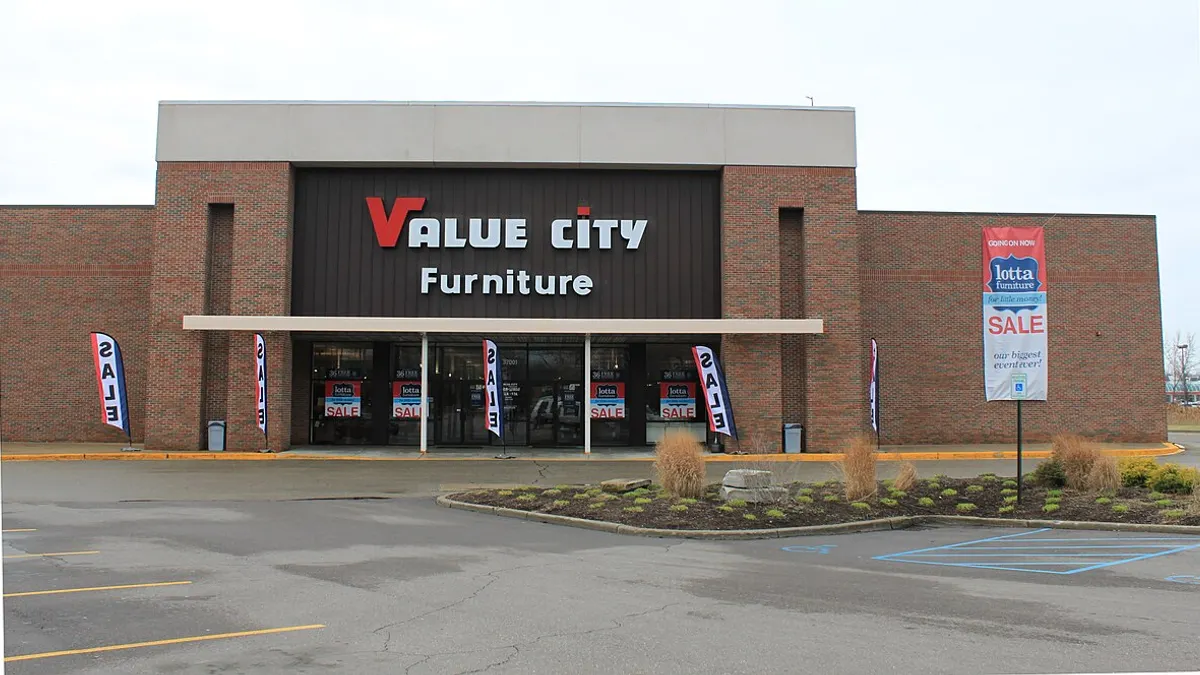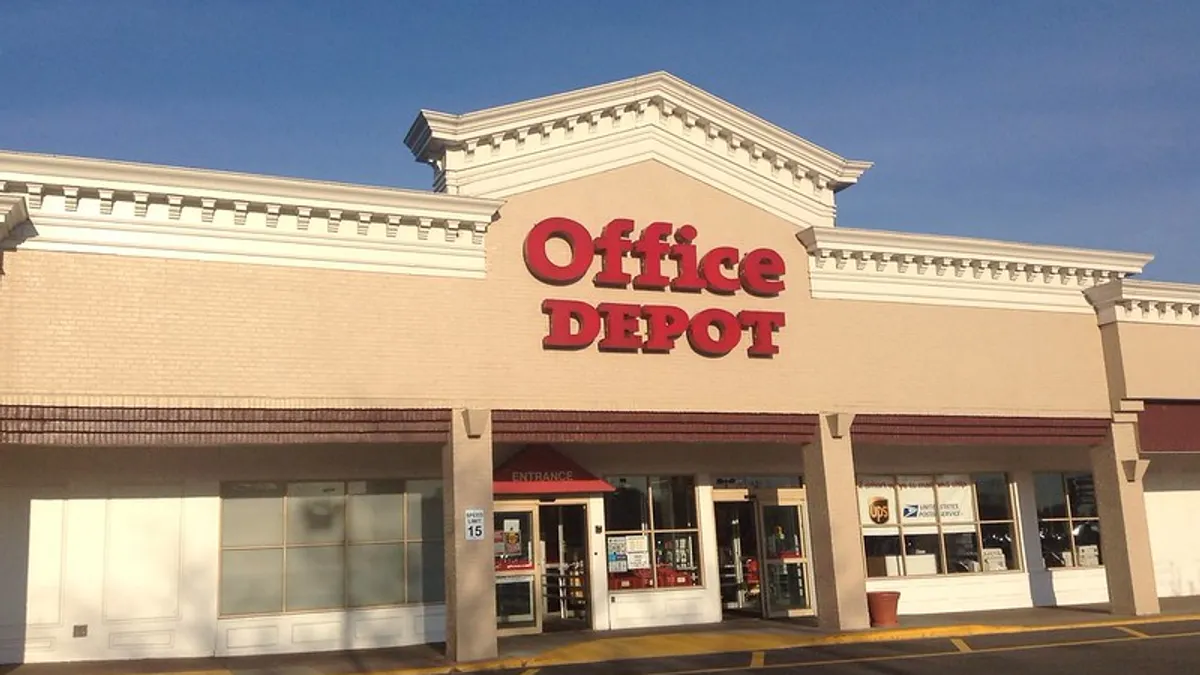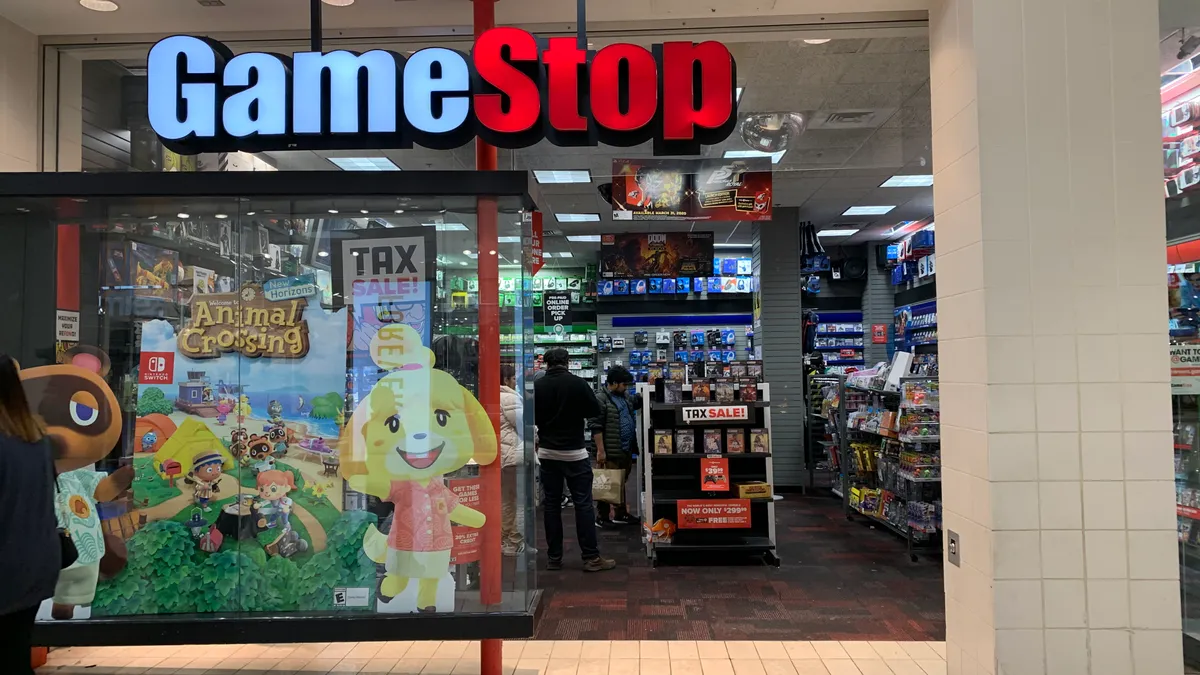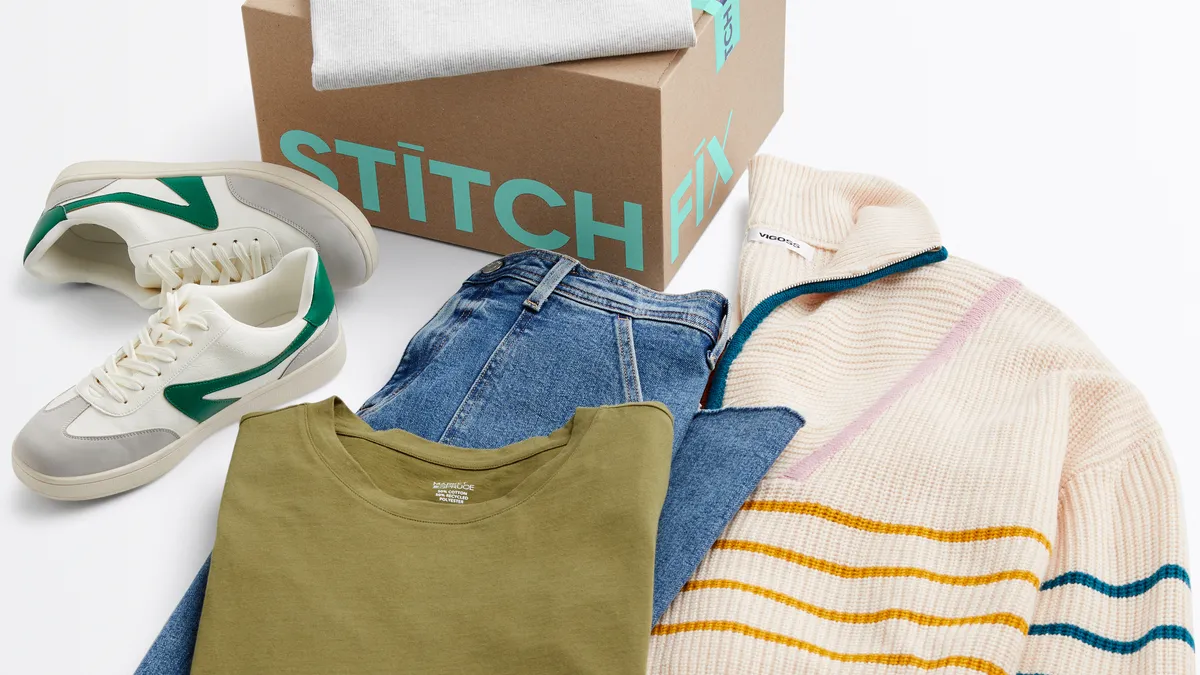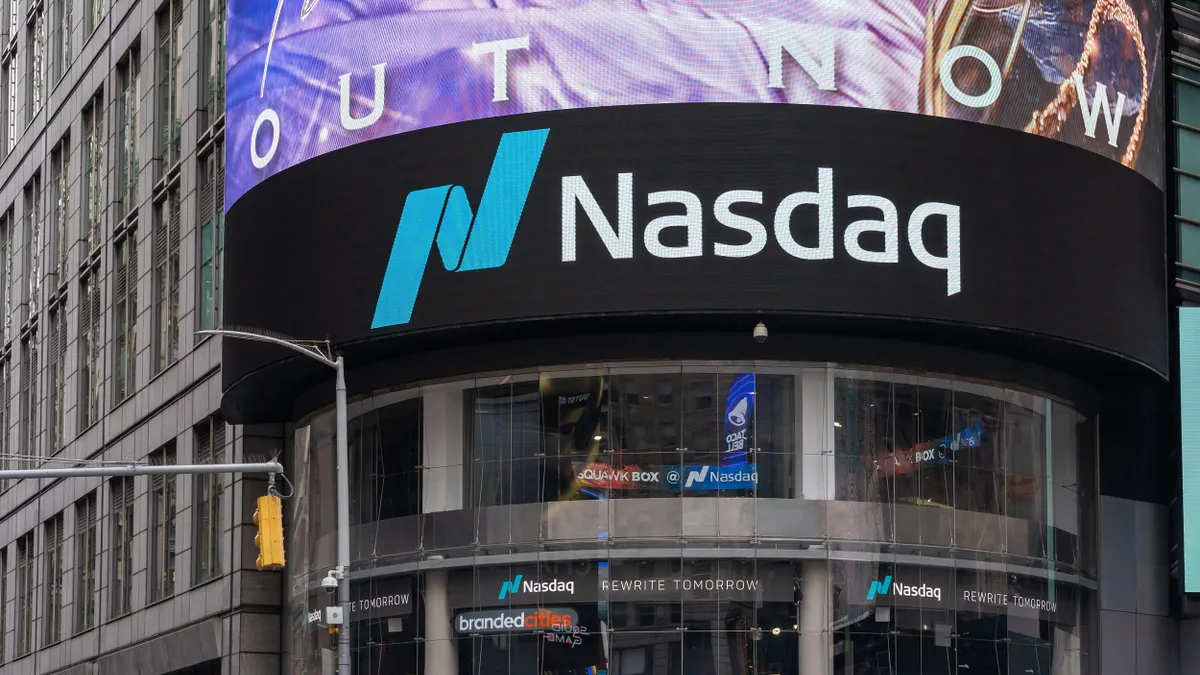Ashlie Geiger, 25, found her dream wedding gown at David's Bridal. It was an Oleg Cassini design in whisper pink with floral embroidery. Even better — it was on the clearance rack. Geiger was excited about her selection, but wasn't prepared for what came next. While in her gown, the sales associate asked her and her mother to stand on an elevated platform in the center of the store and ring a bell while she said "yes to the dress."
"I was literally mortified," Geiger told Retail Dive in an interview. "My mom and I are not close. I invited her to pick out a dress with me because it's traditional. So, I'm standing in front of a crowd with this bell wearing a big, poofy dress and I'm being urged to ring it loudly and cry and scream and hug my mom. I pretty much was frozen from the awkwardness."
On Monday David's Bridal filed for Chapter 11 bankruptcy, which includes a reorganization that slashes debt by $400 million and provides $60 million in financing from current lenders. The move may come as a surprise to those in the market for wedding apparel. Yet, signs of the retailer's struggles have been slowly bubbling to the surface for years. Geiger's uncomfortable retail experience provides a window into some of the issues that have plagued the company, namely lack of finesse when it comes to individual customer needs in a time when brides have more options than ever.
Personalization and the state of apparel
The wedding market is often seen as a separate entity when analysts discuss the current state of apparel. Yet, the trajectory of the segment parallels what has been happening within specialty retail. Fast fashion is patronized because the price points are advantageous. The luxury market is considered by those who want exceptional customer service and have the funds to indulge in a designer label. But, mid-range stores are getting lost in the confusion simply because there are so many opportunities for consumers.
"Effectively, the bridal segment is facing the same trends as apparel overall, which is increased competition," said Raya Sokolyanska, VP senior analyst at Moody's Corporation, in an interview with Retail Dive.
David's Bridal asserts that it sells a dress to one in three brides in the United States. But, the brand has been slow to adapt to a changing market that now includes online pure-play providers, an increase of custom creations, and, due to the casualization of the American wedding, gowns that fall outside of the scope of the traditional white wedding dress.
What makes the bridal market different from the rest of retail, though, is that there is no concept of return business. "You get one shot at exceeding the bride's expectations. This is one customer you get once. And the stakes are high given the occasion," Sokolyanska said.
The ability for brides to go elsewhere if needs aren't met means that personalization is a central strategy for a new crop of wedding apparel providers. Nicole Staple is the co-owner of Brideside, a company that sells bridesmaid dresses and accessories. Stylists at the company focus on understanding the needs of the bride and her bridal party.
"When a bride signs up on our site, regardless of where she lives, she's immediately matched with one of our stylists. That stylist has a very in-depth profile on the bride," said Staple. "So when the customer walks in, we know who she is. We have pre-selected racks of dresses for her. She's already talked to her stylist on the phone. We are converting 80% of the customers that walk in the door."
That form of personalization comes from data gathering and meeting the customer through a variety of channels. Brides aren't solely relying on a brick-and-mortar shopping experience, but rather are being influenced by social media and online searching. "What I think omnichannel really means is that it's not 'oh, I saw it online' and 'oh, I have a store also.' It is the idea that the customer is interacting very fluidly," said Staple.
The price point conundrum
David's Bridal has long positioned itself as a wedding retailer that works within most bridal budgets. But, thin margins may be driving some of its current financial troubles.
Even before Ashlie Geiger had that odd bell ringing moment in-store she chose to shop with the brand because it gave her variety while remaining within her budget. "In my hometown of Morton [Illinois], there are a few small boutiques, but they are known for being outrageously expensive. My dad paid for the wedding venue, food, and dress, but I knew that there would be additional costs like alterations, slips, corsets, etc., and David's sounded like the most affordable option," she said.
"It was historically a Walmart of bridal gowns."

Raya Sokolyanska
Moody's Analyst
Remaining at a mid-range price point may sound like a safe position for a wedding retailer, but a lower price point may have cut back on crucial funding that was needed for the lush customer service brides have grown to expect. "It was historically a Walmart of bridal gowns," Moody's analyst Sokolyanska said. "It was selling value bridal gowns in a large store with attractive pricing and a pretty large assortment. Over time it started losing share in the value segment in the lower-priced gowns where it had a commanding share."
Dropping prices even lower and setting shoppers up with the expectation that they would have a budget experience may have suited a generation of consumers who are now used to fast-fashion pricing. On the other end of the spectrum, raising prices while executing luxury service would have satisfied a portion of the population willing to shell out serious cash for their special day. David's Bridal falls somewhere in the middle with cost and customer service, thereby serving up muddled expectations.
The running of the brides
The Knot's 2017 Real Weddings Study revealed that the average American wedding costs $33,391, so there is not a shortage of spending happening with a couple's special day. Yet, there have been a slew of bridal apparel closures over the past few years including Gap's Weddington Way, J. Crew's bridal line, and rental model closures including Vow to Be Chic and Little Borrowed Dress.
But, the closure that looms the largest is the cautionary tale of Alfred Angelo. In July of 2017, the bridal retailer filed Chapter 7 and abruptly shuttered all of its locations. Stories emerged of employees trying to aid panicked clients before the doors were locked. (At the time, David's Bridal came to their rescue, offering impacted customers 30% off their wedding dresses and 20% off bridesmaids dresses.)
David's Bridal's Chapter 11 filing and restructuring of debt may give the retailer the space it needs to go forward into its next chapter. Yet, the company needs to fight the perception that it will be another Alfred Angelo and send brides running to the competition. Clients need to be reassured that it is a safe place to shop and it will, in fact, still be open from the time the bride places an order until her wedding day.
Calming down that concern is something CEO Scott Key has addressed directly. The David's Bridal website currently contains a video where Key assures customers there is nothing to fear. "Our 300+ stores will continue operating, and all orders and alterations will be delivered as promised," he stated.
On the homepage under a banner about the CEO's statement is a graphic announcing a variety of sales, including wedding dresses that are $99 and up to $500 off gowns. The juxtaposition of a "business as normal" attitude with a declaration of significant price drops is confusing at best. Is it a fire sale? More importantly, is it being perceived as a fire sale?
The company may be struggling to find its footing, but its importance still holds cachet. It's an accessible store where women can touch and try on dresses in an industry where that's not always the standard.
"They are doing a lot of the right things. Providing more service, really investing on the digital and social media front, marketing properly, selling more dresses," said Sokolyanska. "I think all of this is needed operationally. It's just taking a long time and it's expensive."










